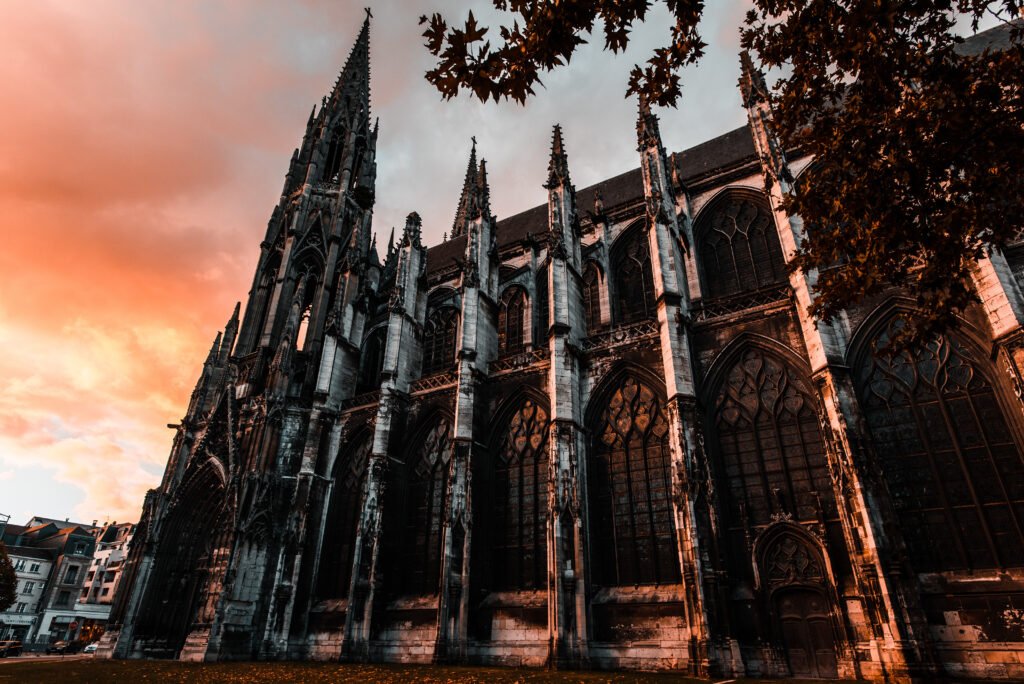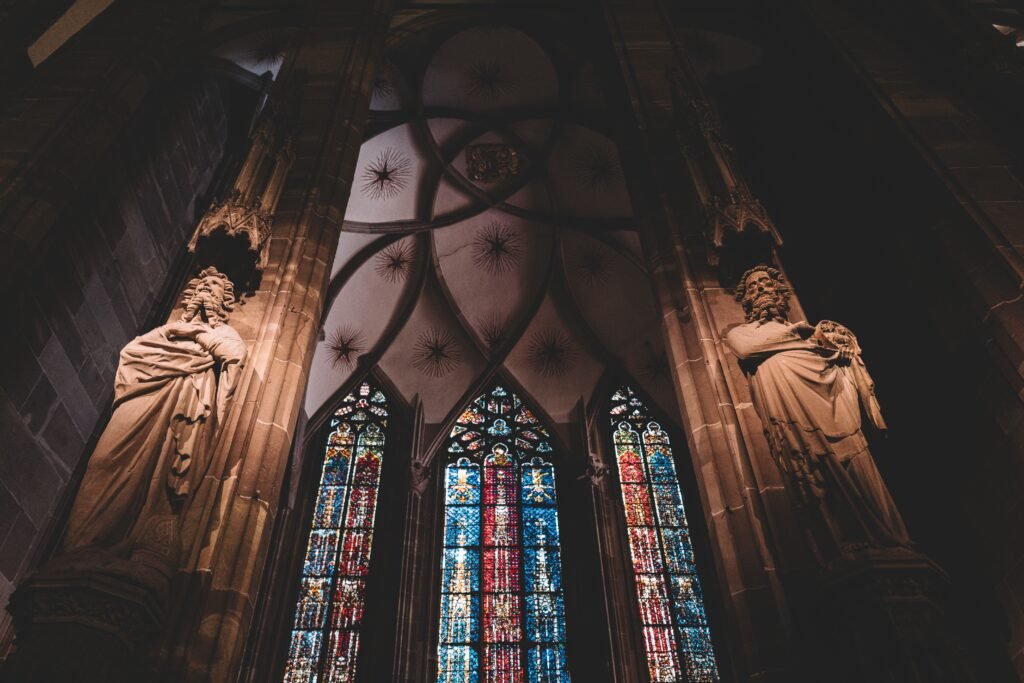Since the origin of Gothic style in Île-de-France, driven by Suger’s liturgical reform in Saint-Denis in the 12th century, the gothic cathedrals built during this time introduced a new architectural model. Pointed arches, ribbed vaults, and flying buttresses redirected weight efficiently, allowing translucent stained-glass walls. This created luminous spaces that evoked the divine and combined technique with transcendence—key elements in the appreciation of art.
These features still inspire those who want to buy artwork or buy paintings with historical significance.
However, during the Renaissance, the renewed admiration for classical antiquity led artists to praise symmetry, horizontality, and proportional clarity. As a result, they dismissed the Gothic style as “barbaric” and lacking order.
In Lives of the Artists (1550), Giorgio Vasari criticized what he saw as structural confusion in Gothic cathedrals. Likewise, Filarete, in his Libro Architettonico (c. 1465), described them as expressions of aberrant modern taste. Despite these criticisms, Gothic architecture continued to influence those who seek to buy art with symbolic and cultural depth.
From Renaissance Rejection to Romantic Appreciation
In the 19th century, Romanticism and national heritage movements revived interest in the medieval legacy. These efforts challenged Cartesian rationalism and industrial utilitarianism. Eugène Viollet-le-Duc, in his Dictionnaire raisonné de l’architecture française (1854–1868), proposed restoration as a return to an idealized architectural state.

This vision mobilized not only technicians but also public opinion and state support. As a result, Gothic cathedrals came to symbolize aesthetic and spiritual ideals, embodying cultural memory and resistance. This shift highlights how context shapes the appreciation of art.
Thus, the history of Gothic cathedrals—from technical brilliance to Renaissance disdain and Romantic revival—proves that aesthetic value changes over time. It arises from the relationship between artwork and context. Therefore, when choosing to buy art online or searching for the best place to buy art, each person projects their own values and expectations onto the piece. Ultimately, the appreciation of art reveals not only the work itself but also the cultural and historical lens of the viewer.



